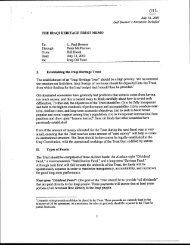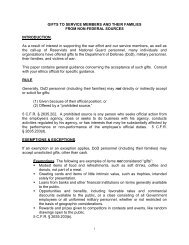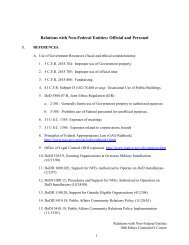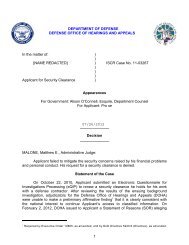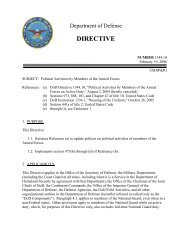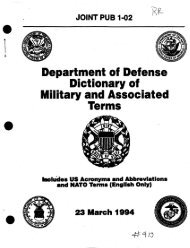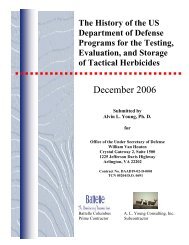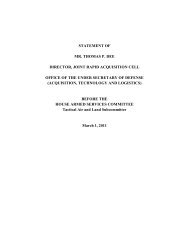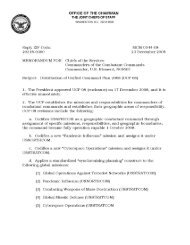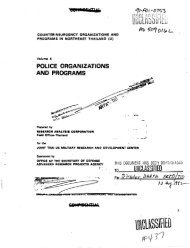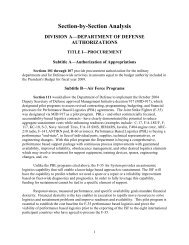Lightweight ExoAtmospheric Projectile (LEAP) - United States ...
Lightweight ExoAtmospheric Projectile (LEAP) - United States ...
Lightweight ExoAtmospheric Projectile (LEAP) - United States ...
You also want an ePaper? Increase the reach of your titles
YUMPU automatically turns print PDFs into web optimized ePapers that Google loves.
4)<br />
5)<br />
6)<br />
a target subassembly within a nose cone;<br />
a target bobst assist module (TBAM) using either a cold gas blowdown or a Star<br />
13C kick ~otor; and,<br />
I<br />
a target reentry motor (Orbus-1 rocket motor or Viper V meteorological rocket<br />
motor).<br />
Launch vehicle guidance is performed by an inertial navigation system. Both PMB and<br />
target are equipped ~th a cold . gas attitude control system.<br />
The auxiliary equipment<br />
provides an external s~urce of electrical power to the projectile plus cryogenic cooling (LN 2 )<br />
of projectile sensors Jntil the projectile is ejected from the PMB.<br />
I<br />
The first flight test of the single launch-vehicle mode involves the Army <strong>LEAP</strong>. Upon<br />
completion of the lauAch, climb, booster burnout, and target shroud release sequence, the<br />
PMB separat..:s from ihe boos~er and deploys its target (see Figure 9). Upon separation,<br />
the target's axial cold-kas blowdown propulsion system takes it to a higher apogee than the<br />
I<br />
PMB. The PMB tracks the target while maintaining a target oriented alignment.<br />
The target, containing the Viper V rocket motor, will be fired downward to achieve an 800<br />
meters per second ( m~ s) closing velocity with the <strong>LEAP</strong> projectile. At a range of about 12<br />
km (7 miles) from the!target the <strong>LEAP</strong> projectile is discharged from the PMB (this occurs<br />
after target motor blimout).<br />
The <strong>LEAP</strong> projectile then maneuvers into the target's<br />
projected flight path, dnd impacts the target. Propulsion for the lateral divert maneuver of<br />
the STP comes from a bum of a small quantity of liquid oxidizer (nitrogen tetroxide, N 2 0.)<br />
and fuel (hydrazine, N~.) a maximum of 833 grams of N 2 0 4 , and a maximum of 504 grams<br />
I<br />
of Njl. or MMH. U~on <strong>LEAP</strong> impact with the target, both are destroyed; however, the<br />
PMB and its instrumetitation are recovered by parachute. All debris from the experiment<br />
I<br />
I<br />
is projected to fall within the dispersion area illustrated in Figure 7 A<br />
A second flight test inlhis mode (single launch vehicle) ;nvolves an experimental Uumept<br />
with the same parameiers as the first flight except as described below. The launch vehicle<br />
will pia:" an AU F o



